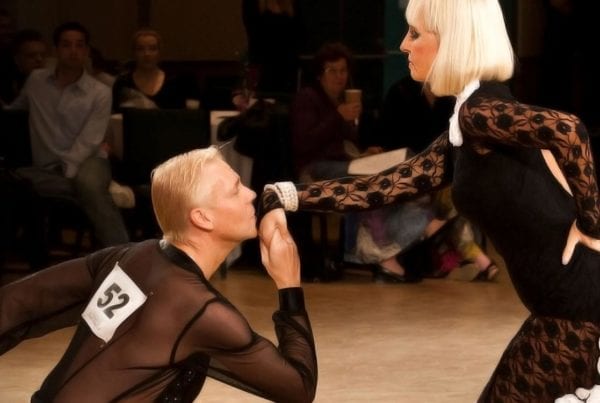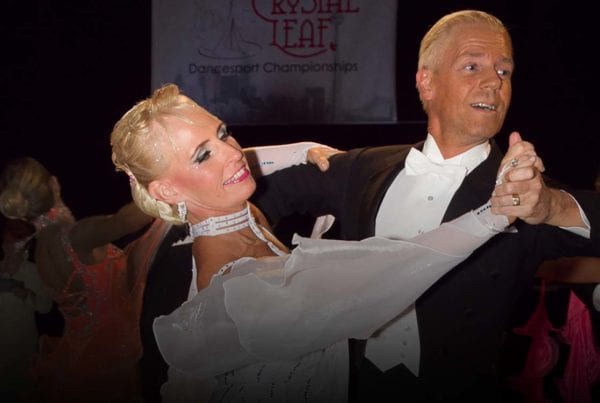It‘s interesting how we can perceive dancing and walking as very different things, but the two are intricately linked and surprisingly similar in so many ways. Here are some insights for dancers on the basics of walking actions to help improve your dancing.
After teaching several hundred people how to dance over the past eight years, one thing that stands out is how many people disconnect dance movement from normal types of movement. They walk into the studio just like they walk down the street, but when they first learn to dance they will often initiate strange actions that are disconnected from the way they walk. Shuffling the feet. Leaning back. Leaning forward. And so on.
We don’t normally think about how we walk. After all, we’ve been doing it pretty much our whole life. The only people who spend much time evaluating how people walk are chiropractors, shoe makers and dance teachers. But let’s take a minute to study that, because it relates well to how we dance.
When babies first learn to walk, they discover this strange force we call gravity. It pushes them down and makes it hard to stand up. Balance becomes a key element in being able to stand in one spot for any length of time. Adding movement complicates everything. Now the force of gravity requires musculart control as the feet move, requiring opposing actions of some muscle groups to keep us balanced. We learn to move the arms as a counter balance. We learn to keep our body between the feet as they move, and to stay centered above our feet when they stop moving. We learn to control the momentum through things like sway, enabling us to glide smoothly to a stop rather than having our bodies move beyond the action.
Then we learn to move faster; to run, and some things become different. Where we place our feet is slightly different in running than in walking, due to the extra momentum involved.
When they first learn to dance, people often initiate strange actions that are disconnected from the way they walk. Shuffling the feet. Leaning back. Leaning forward. And so on.
By the time they walk into a dance studio, most people pretty much walk with the same technique. They swing one foot forward starting with the heel of that foot, pushing off the ball of the back foot. As they begin to arrive over the front foot, it rolls onto the flat foot and the ball of the back foot releases to collect the back foot underneath the body. The back foot then switches from the ball to the heel as it swings forward.
When you analyze this movement pattern, you realize it’s exactly what we do in dancing, especially a srong walking-style dance like the Slow Foxtrot. The Foxtrot traces its history back to the Castle Walk, which was very strongly associated with a walking-style movement.
Very seldom do I see people walk down a sidewalk sliding both feet flat the whole time, or keeping the body always aligned over the front or back foot. Because those actions are inefficient, we don’t learn that way unless affected by an unusual situation, perhaps an injury or childhood trauma. Yet surprisingly, in a beginner dance class, they will move in those inefficient ways because, as I’ve heard more than once… “it’s dancing.”
When you dance, take a moment to compare the movement of your legs and feet to the way you move normally. You might be surprised at the similarities. And you can learn a few things about moving more efficiently.
The Foxtrot traces its history back to the Castle Walk, which was very strongly associated with a walking-style movement.
Swing dances especially are basically stylized walking actions. The swing of a foot forward or back while you turn the body causes the foot to arrive to the side of the foot you started with. When you’re up on your toes, it makes sense to use the toe for your next step, because it is inefficient and clumsy to use the heel. When you move forward from a low position, it makes sense to drive off the ball of the standing foot and use the heel of the forward foot. These are natural walking movements. Tango has some different characteristics, but it can be compared to real-world actions as well. Consider how you would walk across a rushing whitewater creek using just stepping stones. You would move your body weight from stone to stone, ensuring that you were balanced over the foot with each step. That’s pretty much the same thing you do in Tango. The Latin dances, of course are quite different from Ballroom in terms of the foot movement, except for Paso Doble.
Walking Backwards
We don’t normally walk backwards. If you’re walking down a hallway and hear someone call your name from behind you, people don’t usually walk backwards to where the voice originated. Instead, they turn around and walk forwards towards the source of the voice.
Because walking backwards is foreign to us when we start to dance, it makes sense when we see people doing strange things like sticking their legs out awkwardly behind them, taking unusually small steps, or leaving the front foot flat while stepping back. But when you study the mechanics of walking backwards, the principles are the same as those of walking forwards. We place the ball of a foot behind us with a leg that is very slightly flexed, lifting the front toe as soon as we begin to move. As we arrive over the back foot our front foot passes the other foot to begin taking over as the back foot. This natural rolling of the feet is pretty much identical to what we do in Slow Foxtrot. Yet when people learn to dance Slow Foxtrot, they typically try to move in very unnatural ways because they view it as something new. The only thing that’s new is not lifting the feet during this action!
Unfortunately far too many dancers move backwards leaving the front foot completely flat, which creates a few challenges in moving smoothly, and affects the partner who is moving forwards. When we treat the backwards steps the same way we do walking in everyday settings, we find Slow Foxtrot much easier to master.













